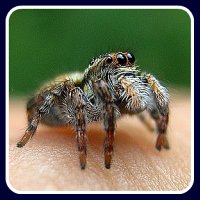Only four native snakes in North America are highly venomous and they are; rattlesnakes, coral snakes, copperheads and cottonmouths. Among the most venomous snake species, the pit viper species (rattlesnake, copperheads and cottonmouths) are among the most hostile which causes majority of reported snake bites in North America. Other venomous snakes such as the various cobra species, the black mamba, brown snakes and vipers which are equally dangerous and highly venomous are scattered in large continents in Europe, Asia, Africa and Australia.
[note color=”#3890d4″]Recognizing a Venomous Snake Bite [/note]
The signs of a venomous snake bite will generally differ from the species of snake and the potency of its venom. However, there are universal symptoms true to all venomous snake bites which are the following:
- Puncture wound depending on the specie of snake will range anywhere from ½ to 1 ½ inches apart.
- Severe burning pain on the bitten part of the body.
- Discoloration and blood-filled blisters possibly developing within minutes to several hours after the bite.
- Nausea, vomiting, sweating and weakness.
- If not given appropriate anti-venom, victim’s organs will shutdown causing asphyxiation and cardiac arrest.
[note color=”#3890d4″]First aid care for a Venomous Snake Bite [/note]

To care for a venomous snake bite:
- Get the victim and bystanders away from the snake.
- Identify the snake (color, special markings and features) for easy identification of anti-venom to be given.
- Keep the victim calm, and limit movement as much as possible. Immobilize the affected limb.
- Apply mild pressure by wrapping the area with and elastic bandage over the site as well as the entire length of the arm or leg.
- Call for emergency medical services immediately for antivenin and further medical management.
- Do not attempt to cut and suck out the venom out from the bitten area or apply ice to the area.
An antivenin is an antiserum containing antibodies against various reptile or insect venom. Identifying the type of snake is essential in order for medical personnel to match the same antivenin class to counter the effects of the snake bite. Although similar classes of pit viper bites have basically the same antivenin compositions, other snake species such as coral snakes and cobras have different antivenin types.
Insect stings
Most people will only experience the mild effects of an insect sting. However, there are a certain few who can experience severe allergic reactions known as anaphylaxis when an allergen such which comes from the insect bite. CPR courses can be helpful in this kind of situations.
[note color=”#3890d4″]Recognizing an Insect Sting [/note]
A rule of thumb is that the sooner symptoms develop following an insect sting, the more serious the reaction will be. Common signs of an insect sting include the following:
- Pain
- Itching
- Swelling
Signs of a severe allergic reaction (anaphylaxis) include the following:
- Difficulty breathing
- Swelling of the mouth, tongue and throat
- Tightness of the chest
- Dizziness and nausea
Here is a video on How to Treat an Insect Bite or Sting | First Aid
[media url=”http://www.youtube.com/watch?v=YkUW3pquCF4″ width=”600″ height=”400″][note color=”#3890d4″]Care for an Insect Sting [/note]
To care for an insect sting:
- If the stinger is still embedded, remove it as quickly as possible. Do not use tweezers in pulling the stinger out.
- Wash the area with soap and water.
- Apply ice or cold pack over the sting area.
- Applying a hydrocortisone cream can help alleviate local swelling and itching. Antihistamine such as Benadryl can significantly reduce itching and swelling if given early after the stinging incident. However, when antihistamine is taken orally the effects are delayed but can substantially counteract severe allergic reactions.
- Observe the victim for signs of severe anaphylactic reactions. For victims with severe allergic reactions, immediately call for emergency medical services.
- If the victim has a prescribed epinephrine auto-injector, assist the victim in using it.
First aid courses are now available online.
[note color=”#41a7d5″]1st Aid Reference for this article: [/note]Alton, T. et al (2012). First Aid, CPR and AED Standard 6th Ed. Jones & Bartlett Learning
